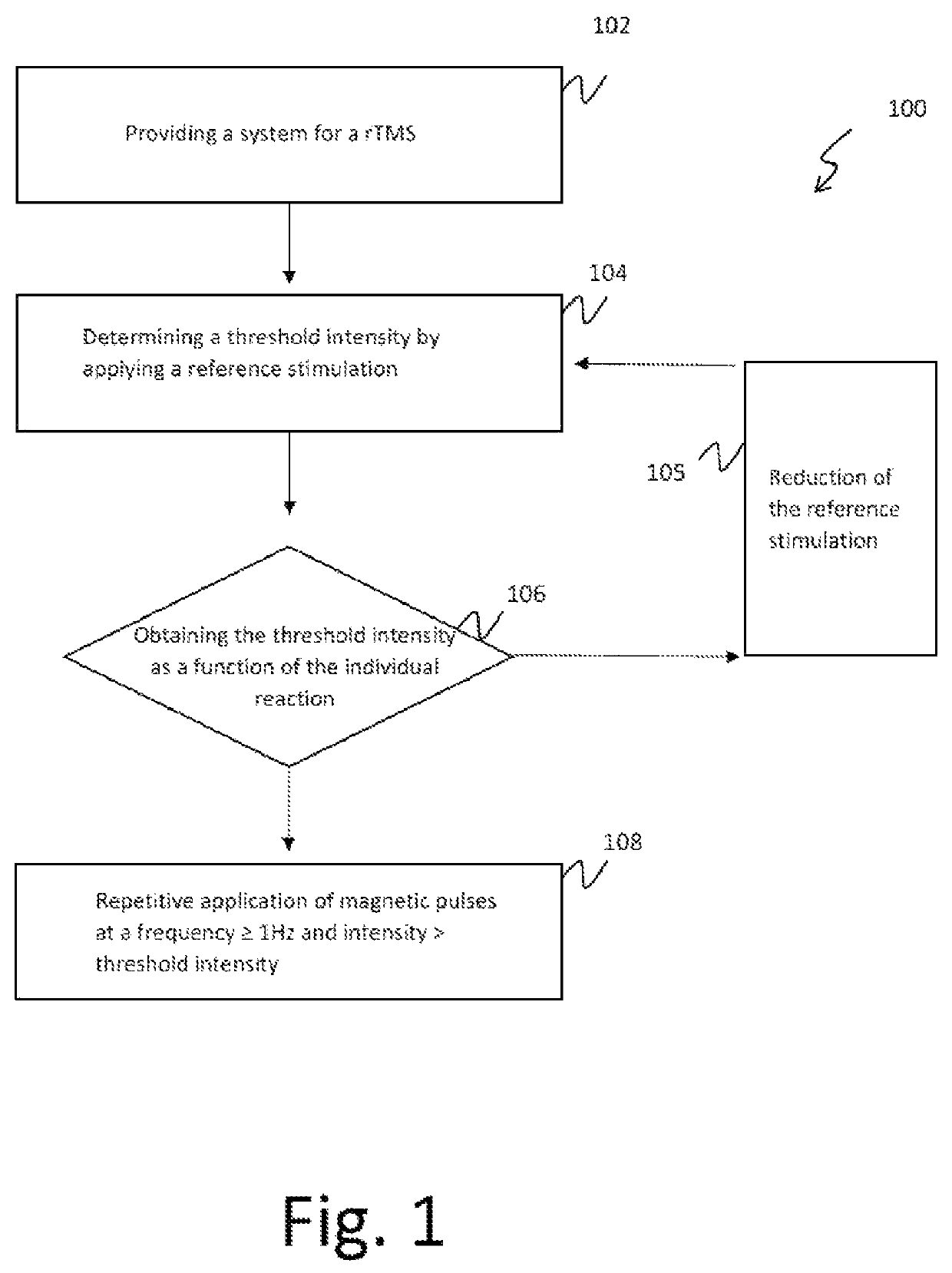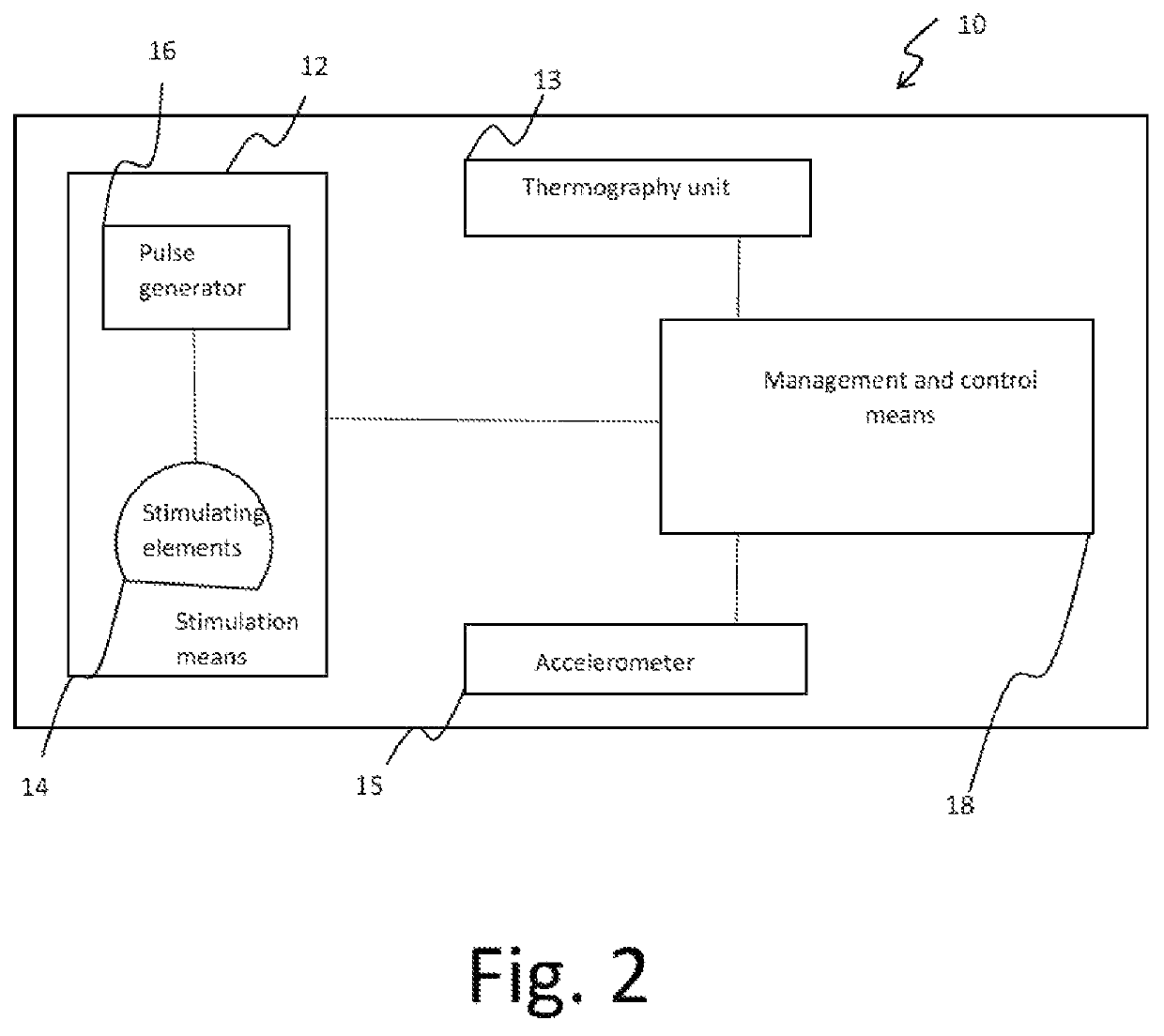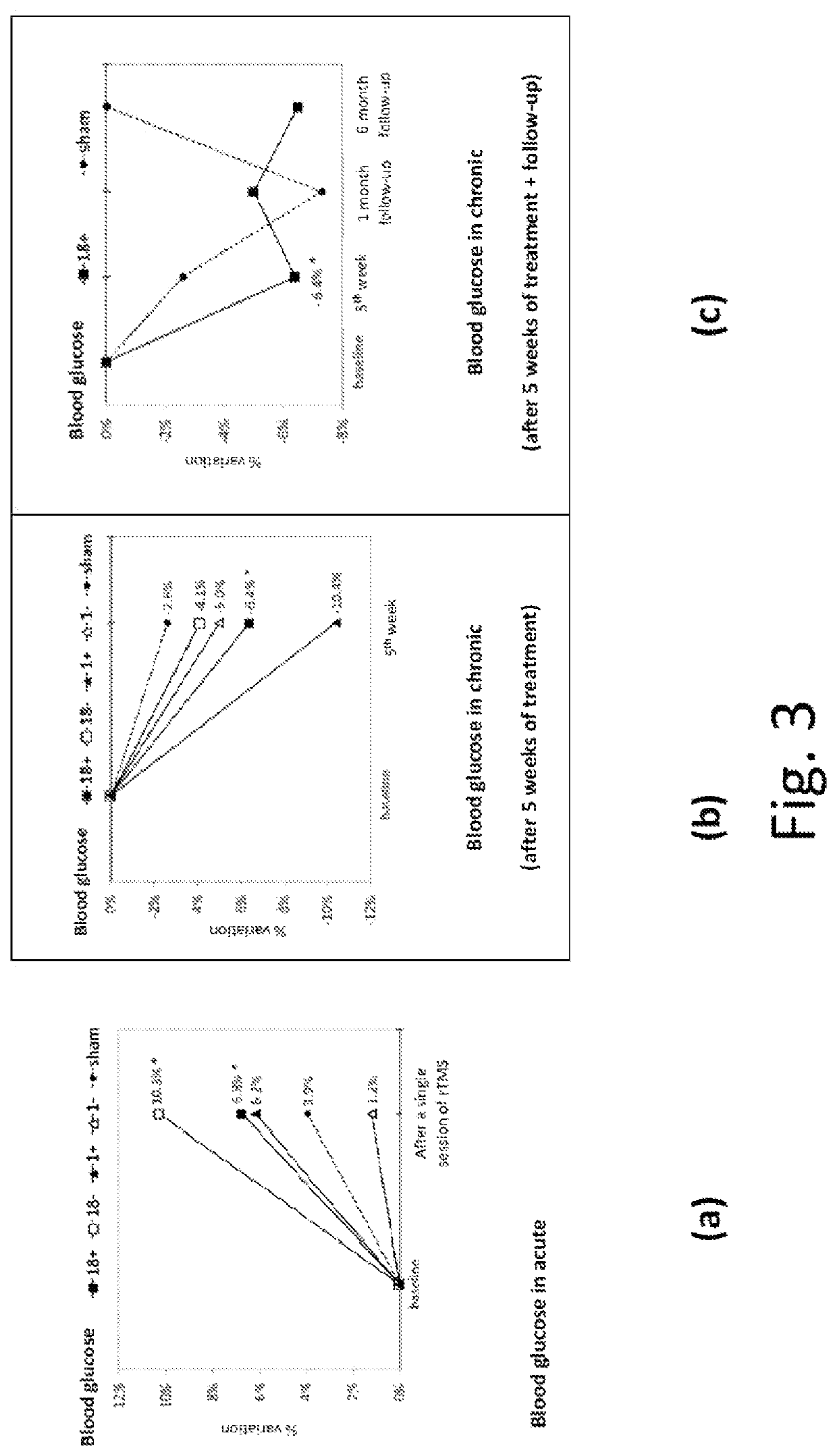Method and system for modulating the brain electrical activity
a brain electrical activity and brain technology, applied in the field of non-therapeutic methods and systems for deep and repetitive transcranial magnetic stimulation of individuals, to achieve the effects of promoting bacterial species with anti-inflammatory properties, reducing body weight, and improving the activity of sympathetic nervous system and intestinal microbiota
- Summary
- Abstract
- Description
- Claims
- Application Information
AI Technical Summary
Benefits of technology
Problems solved by technology
Method used
Image
Examples
Embodiment Construction
[0012]These objects are achieved by a method, system and use of such a system according to the claims at the end of the present description.
[0013]The method according to the present invention is used for modulating the brain electrical activity of an individual through a magnetic stimulation of at least one area of the scalp of said individual. Magnetic stimulation consists of pulses or magnetic stimuli and is adapted to affect control centers or neuronal circuits localized in the brain with systemic consequences.
[0014]In particular, the method according to the present invention is not directed to reduce the addiction of the individual from a specific substance or habit.
[0015]Specifically, the method initially comprises the determination of a threshold intensity of magnetic pulses as a function of the individual's reaction to a reference magnetic stimulation and subsequently the repeated application of magnetic stimulation at a pulse frequency greater than or equal to 1 Hz, with an ...
PUM
| Property | Measurement | Unit |
|---|---|---|
| frequency | aaaaa | aaaaa |
| temperature | aaaaa | aaaaa |
| pulse frequency | aaaaa | aaaaa |
Abstract
Description
Claims
Application Information
 Login to View More
Login to View More - R&D
- Intellectual Property
- Life Sciences
- Materials
- Tech Scout
- Unparalleled Data Quality
- Higher Quality Content
- 60% Fewer Hallucinations
Browse by: Latest US Patents, China's latest patents, Technical Efficacy Thesaurus, Application Domain, Technology Topic, Popular Technical Reports.
© 2025 PatSnap. All rights reserved.Legal|Privacy policy|Modern Slavery Act Transparency Statement|Sitemap|About US| Contact US: help@patsnap.com



